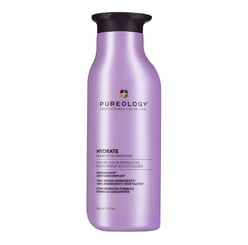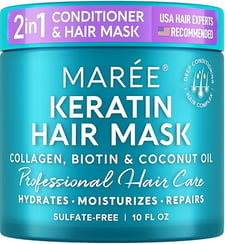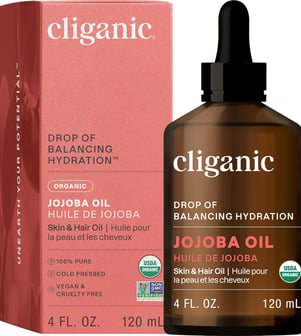How to Treat High Porosity Hair
5/22/20254 min read
If you have high porosity hair, you know the struggle: your hair soaks up moisture quickly but loses it just as fast. It can feel dry, frizzy, and prone to breakage despite your best efforts to keep it hydrated. The good news? With the right care and products, high porosity hair can be transformed into strong, shiny, and well-moisturized strands.
In this blog post, we’ll dive into what high porosity hair really means, how to identify it, and most importantly—how to treat it effectively at home.
What Is High Porosity Hair?
Hair porosity refers to your hair’s ability to absorb and retain moisture. High porosity hair has gaps and holes in the cuticle layer, often caused by damage from heat styling, chemical treatments, or genetics. These gaps make it easy for moisture to enter—but just as easy for it to escape.
Signs of High Porosity Hair
Not sure if your hair is high porosity? Here are some telltale signs:
Hair dries very quickly after washing
Frequently feels dry, brittle, or frizzy
Tangles easily
Absorbs products quickly but still feels dry
Prone to split ends and breakage
Has difficulty maintaining styles
You can also do a porosity test by dropping a clean strand of hair into a glass of water. If it sinks quickly, your hair likely has high porosity.
Causes of High Porosity Hair
High porosity hair can be:
Genetic: Some people are simply born with more porous hair.
Environmental: Sun, wind, and pollution can degrade the cuticle over time.
Chemical: Hair dye, bleach, perms, and relaxers open the cuticle.
Heat: Frequent use of flat irons, curling wands, and blow dryers can cause damage.
How to Treat High Porosity Hair
1. Use Moisturizing Shampoos and Conditioners
Look for sulfate-free shampoos and conditioners rich in emollients and humectants, such as:
Shea butter
Coconut oil
Aloe vera
Glycerin
These ingredients help attract and lock in moisture, providing much-needed hydration.
2. Deep Condition Weekly
Deep conditioning treatments are essential for high porosity hair. Choose masks and conditioners that contain proteins and lipids to fill in the gaps in the hair cuticle.
Try ingredients like:
Hydrolyzed keratin
Silk protein
Avocado oil
Honey
MAREE Hair Mask for Damaged Hair - Keratin Treatment Conditioner
Apply a deep conditioner once a week and cover your hair with a plastic cap for at least 20–30 minutes. For better results, use gentle heat (like a warm towel or heated cap) to help the treatment penetrate more deeply.
3. Incorporate Protein Treatments
High porosity hair can benefit from occasional protein treatments to strengthen weakened strands. Use a protein treatment every 2–4 weeks depending on how your hair reacts.
Note: Balance is key. Too much protein can make your hair feel stiff or brittle, so alternate with moisture treatments.
4. Seal in Moisture
Because high porosity hair loses moisture easily, sealing is essential. Follow the LCO or LOC method:
L – Leave-in conditioner
C – Cream (moisturizer)
O – Oil (like castor, olive, or jojoba)
Cliganic Organic Jojoba Oil, 100% Pure
This layering method helps lock moisture into the hair shaft and keep it from evaporating.
5. Avoid Harsh Ingredients
Stay away from products that strip moisture or damage the cuticle, such as:
Sulfates
Alcohols (drying types like denatured alcohol)
Synthetic fragrances and dyes
Excessive heat and chemical processing
Gentle, natural products are your best friend when treating high porosity hair.
6. Protective Styles
Protective styles like braids, twists, buns, and updos can help minimize exposure to damage and reduce moisture loss. Just make sure not to pull too tightly or leave styles in for too long.
Also consider sleeping on a silk or satin pillowcase, or wearing a satin bonnet to reduce friction and moisture loss overnight.
7. Use Cold Water Rinses
After conditioning, rinse your hair with cool or cold water. This helps to close the cuticle and lock in moisture, leaving your hair smoother and shinier.
Recommended Ingredients for High Porosity Hair
Here are some of the most effective ingredients to look for in your hair care products:
Aloe vera – Hydrating and soothing
Shea butter – Moisture sealing
Coconut oil – Penetrates the hair shaft
Jamaican black castor oil – Thick and ideal for sealing ends
Avocado oil – Rich in fatty acids
Hydrolyzed protein – Repairs damage and adds strength
Sample Weekly Routine for High Porosity Hair
Monday: Cleanse with moisturizing shampoo and conditioner
Tuesday: Light leave-in conditioner and seal with oil
Wednesday: Moisturize & seal (LCO method)
Thursday: Protective style or low-manipulation hairstyle
Friday: Co-wash and re-moisturize
Saturday: Deep condition with heat
Sunday: Rest or scalp massage with oil
Final Thoughts
Treating high porosity hair is all about consistent hydration, strengthening, and protection. With the right care, you can improve elasticity, reduce breakage, and bring out the natural beauty of your curls or coils. Remember to listen to your hair—adjust your routine as needed, and always prioritize moisture and gentle products.
Embrace your high porosity hair with the love and care it deserves, and you’ll see amazing results over time!
Disclosure - When you use our link to buy something, we may earn a small commission—at no extra cost to you!





